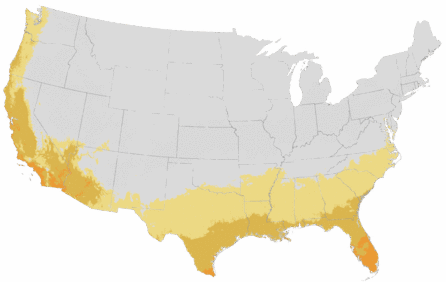You're growing in this Zip Code:
Change LocationDiscover Plants for Your Area
Jury's Pearl Camellia
Camellia x 'Jury's Pearl' (C. pitardii x Tomorrow)
Retailers Near You
No Retailers found within 50 miles of your zipcode
Be Inspired: How to Use this Plant
| Bloom Time | Early winter to mid-spring |
|---|---|
| Deciduous/Evergreen | Evergreen |
| Special Features | Easy Care, Non-toxic to Cats and Dogs, Compact Form |
| Growth Rate | Moderate |
| Flower Attributes | Flowers for Cutting, Long Bloom Season, Showy Flowers |
| Landscape Use | Hedge |
| Design Ideas | A must for Asian or woodland garden settings under large, old shade trees with filtered canopies. Plant as a backdrop in mixed beds or as a foundation plant in high visibility areas. Dress up a wall or garage as a shrub, or train as an espalier for a formal look. |
| Flower Color | Pink |
| Foliage Color | Dark Green |
| Care Instructions | Provide organically rich, well-drained, acidic soil. Keep roots cool with a thick layer of mulch. Water deeply and regularly during the first growing season to establish an extensive root system; reduce frequency, once established. Feed with an acid fertilizer after flowering. |
| Lore | The genus Camellia was named by Carolus Linnaeus who named it for a Jesuit missionary Georg Kamel, who cultivated an important garden of local medicinal plants on the Philippine Island of Luzon in the 17th century. Jury's Pearl originated at Jury's Nursery in North Taranaki, New Zealand. Red camellias are a symbol of wealth and white Camellias signify loveliness. Camellias represent longevity and faithfulness and have long been a primary floral component in Asian weddings. |
| Bloom Time | Early winter to mid-spring |
|---|---|
| Deciduous/Evergreen | Evergreen |
| Special Features | Easy Care, Non-toxic to Cats and Dogs, Compact Form |
| Growth Rate | Moderate |
| Flower Attributes | Flowers for Cutting, Long Bloom Season, Showy Flowers |
| Landscape Use | Hedge |
|---|---|
| Design Ideas | A must for Asian or woodland garden settings under large, old shade trees with filtered canopies. Plant as a backdrop in mixed beds or as a foundation plant in high visibility areas. Dress up a wall or garage as a shrub, or train as an espalier for a formal look. |
| Flower Color | Pink |
| Foliage Color | Dark Green |
| Care Instructions | Provide organically rich, well-drained, acidic soil. Keep roots cool with a thick layer of mulch. Water deeply and regularly during the first growing season to establish an extensive root system; reduce frequency, once established. Feed with an acid fertilizer after flowering. |
|---|
| Lore | The genus Camellia was named by Carolus Linnaeus who named it for a Jesuit missionary Georg Kamel, who cultivated an important garden of local medicinal plants on the Philippine Island of Luzon in the 17th century. Jury's Pearl originated at Jury's Nursery in North Taranaki, New Zealand. Red camellias are a symbol of wealth and white Camellias signify loveliness. Camellias represent longevity and faithfulness and have long been a primary floral component in Asian weddings. |
|---|
Retailers Near You
No Retailers found within 50 miles of your zipcode
Retailers Near You
No Retailers found within 50 miles of your zipcode
Buy Online
We cannot currently ship this product to your zip code.
About Us
We have been pioneers and craftsmen in the art of growing plants for nearly
100 years. Since our founding in Southern California by Harry E. Rosedale, Sr.
in 1926, we have been absolutely dedicated and obsessed with quality.
We have been pioneers and craftsmen in the art of growing plants for nearly 100 years. Since our founding in Southern California by Harry E. Rosedale, Sr. in 1926, we have been absolutely dedicated and obsessed with quality.






